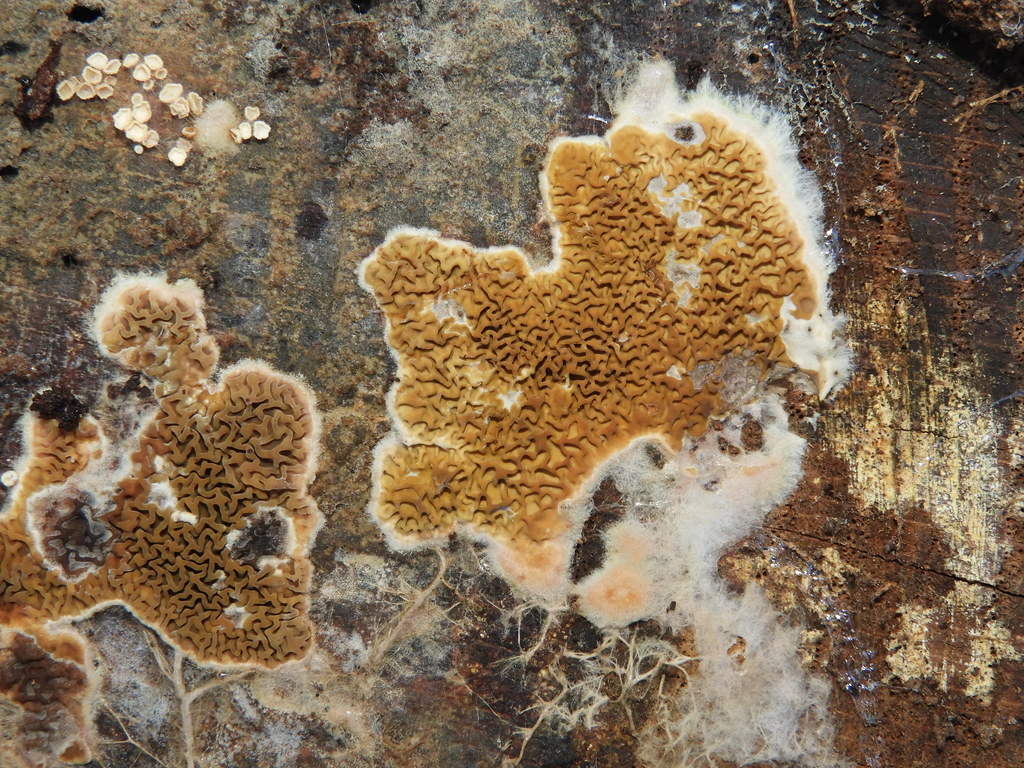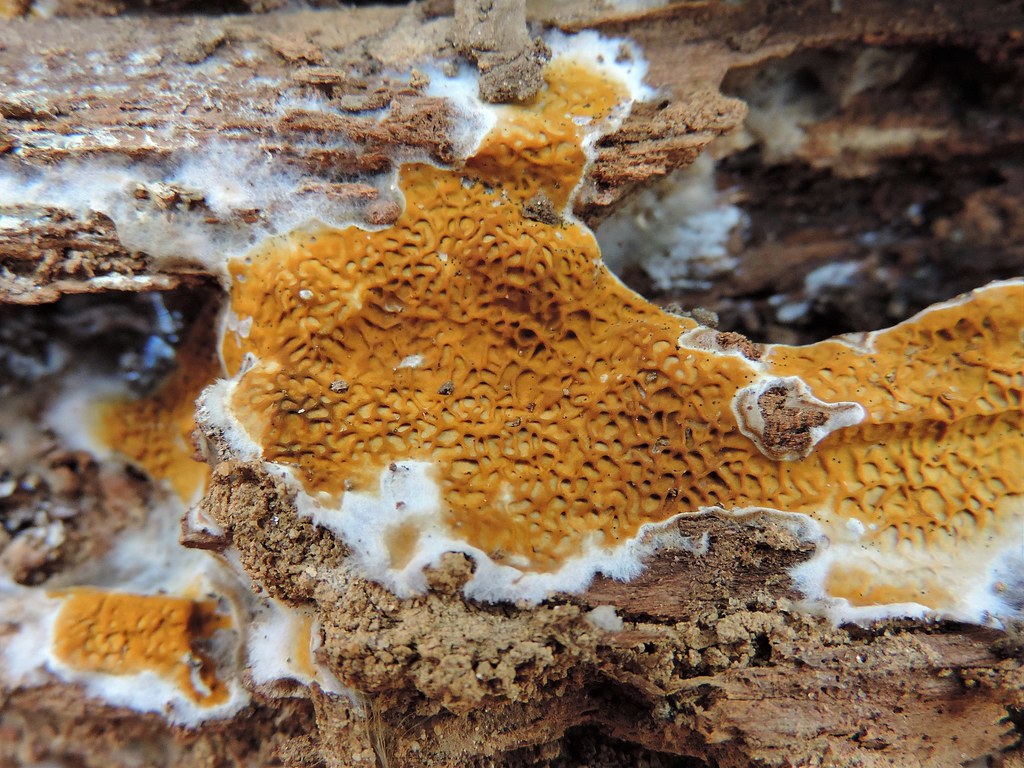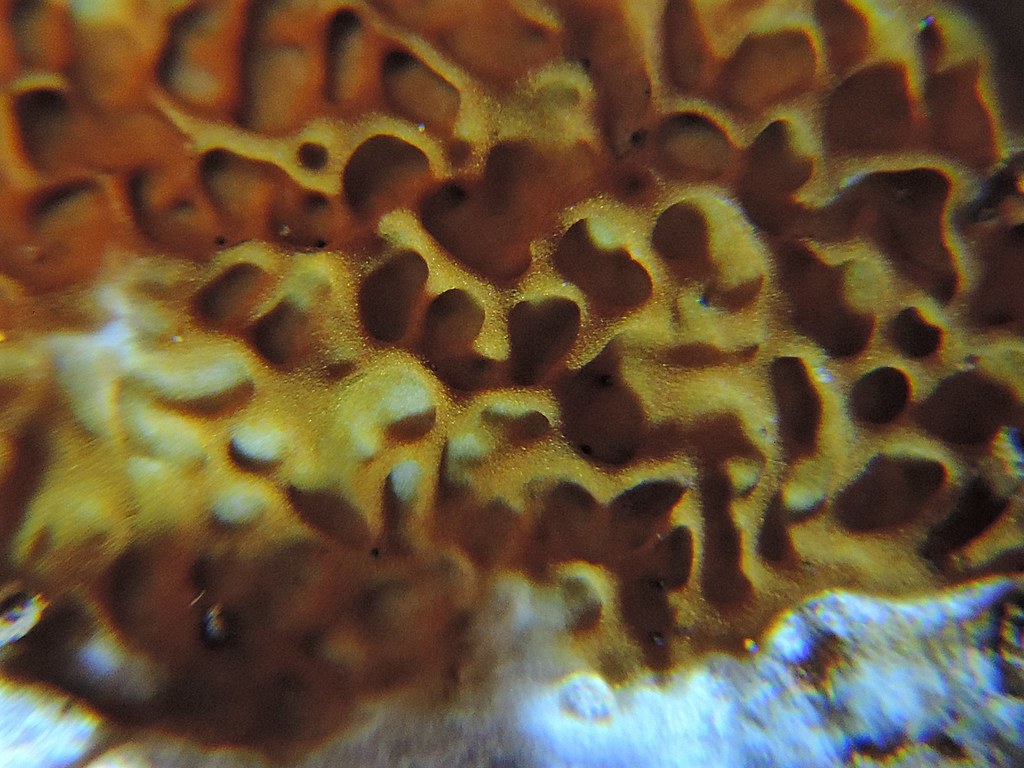Map Snapshot








8 Records
Status
S. lacrymans is most often associated with hard surfaces and damp wood indoors; S. himantioides is usually found outdoors, preferring conifer logs and stumps. Not safely separated by habitat using macro characteristics.
Description
Brown to rusty-brown to yellow-brown spreading honeycomb-like crust with a white margin. May form patches several feet in diameter with long gray-white runners. Fertile surface consists of connecting projections and depressions. (J. Solem, pers. comm.)
Seasonality Snapshot
Source: Wikipedia
| Serpula himantioides | |
|---|---|

| |
| Scientific classification | |
| Domain: | Eukaryota |
| Kingdom: | Fungi |
| Division: | Basidiomycota |
| Class: | Agaricomycetes |
| Order: | Boletales |
| Family: | Serpulaceae |
| Genus: | Serpula |
| Species: | S. himantioides
|
| Binomial name | |
| Serpula himantioides | |
| Synonyms[1] | |
| |
Serpula himantioides is a species of fungus that causes damage to timber referred to as dry rot. It is a basidiomycete in the order Boletales. It has been found on all continents except for Antarctica. Recent molecular work demonstrates that S. himantioides is a species complex including multiple cryptic lineages.[2]
Taxonomy
[edit]The fungus was first described in 1818 by Elias Magnus Fries as Merulius himantioides.[3] Petter Karsten transferred it to the genus Serpula in 1884.[4]
Host and symptoms
[edit]Serpula himantioides is a fungal pathogen within the division Basidiomycota. It produces thin, resupinate (inverted), membranous fan-like basidiocarps that are brownish in color and appear as distinctive fruiting bodies on the exterior of the host. S. himantioides prefers the moist wood of coniferous hosts such as fir, larch, spruce, and pine. It is the causal agent of butt rot disease, the symptoms of which include rotting the heartwood at base of tree, as well as damage to the tap root and cores of lateral roots, but standing trees show no signs of infection.[5] It also a common cause of timber rotting in buildings, which has made this pathogen difficult to differentiate from S. lacrymans because of their similarities.[6][7] This disease often goes unnoticed initially due to a lack of any above ground symptoms of disease. Signs of the pathogen include basidiospores, and fungal masses that are generally dark brown and membranous in the center but become thin white mycelium towards edges of the mass. The brown cubical rot caused by S. himantioides resembles the rots of Phaeolus schweinitzii and S. lacrymans.[5]
Importance
[edit]Serpula himantiodes is a pre-harvest pathogen that exerts economic impact on lumber supply.[5] It is considered the wild sister species of S. lacrymans, the pathogen that causes dry rot in wooden building structures. S. himantioides is studied most frequently in the context of its relation to S. lacrymans.[8]
Disease cycle
[edit]Serpula himantioides has a heterothallic tetrapolar mating system. This means it requires the growth and conjugation of two mating types, determined by the expression of one or more alleles of two unlinked mating loci, for sexual reproduction.[2][9][10]
Environment
[edit]Serpula himantioides is commonly found in the wild, while S. lacrymans is rarely found in the wild and is generally found on lumber in buildings and construction.[11]
References
[edit]- ^ "Serpula Fr.) P. Karst., Meddn Soc. Fauna Flora fenn. 11: 21 (1885)". Index Fungorum. CAB International. Retrieved 2013-05-14.
- ^ a b Carlsen T; Engh IB; Decock C; Rajchenberg M; Kauserud H. (2011). "Multiple cryptic species with divergent substrate affinities in the Serpula himantioides species complex". Fungal Biology. 115 (1): 54–61. doi:10.1016/j.funbio.2010.10.004. hdl:11336/82654. PMID 21215955.
- ^ Fries EM. (1818). "Observationes mycologicae" (in Latin). 2. Copenhagen: Gerh. Bonnier: 238.
{{cite journal}}: Cite journal requires|journal=(help) - ^ Karsten PA. (1885). "Fungi rariores Fennici atque nonnulli Sibirici a Dr. Edw. Wainio lecti". Meddelanden Af Societas Pro Fauna et Flora Fennica (in Latin). 11: 136–147.
- ^ a b c Seehan G. (1986). "Butt rot in conifers caused by Serpula himantioides (Fr.) Karst". European Journal of Forest Pathology. 16 (4): 207–217. doi:10.1111/j.1439-0329.1986.tb01089.x.
- ^ White NA; Low GA; Singh J; Staines H; Palfreyman JW. (1997). "Isolation and environmental study of 'wild' Serpula lacrymans and Serpula himantioidies from the Himalayan Forests". Mycological Research. 101 (5): 580–584. doi:10.1017/S0953756296003000.
- ^ White NA; Dehal PK; Duncan JM; Williams NA; Gartland JS; Palfreyman JW; Cooke DEL. (2001). "Molecular analysis of intraspecific variation between building and 'wild' isolates of Serpula lacrymans and their relatedness to S. himantioides". Mycological Research. 105 (4): 447–452. doi:10.1017/S0953756201003781.
- ^ Kauserud H; Knudsen H; Högberg N; Skrede I. (2004). "Molecular phylogenetics suggest a North American link between the anthropogenic dry rot fungus Serpula lacrymans and its wild relative S. himantioides". Molecular Ecology. 13 (10): 3137–3146. doi:10.1111/j.1365-294X.2004.02307.x. PMID 15367126. S2CID 25942196.
- ^ Kauserud H; Knudsen H; Högberg N; Skrede I. (2012). "Evolutionary origin, worldwide dispersal, and population genetics of the dry rot fungus Serpula lacrymans". Fungal Biology Reviews. 26 (2–3): 84–93. doi:10.1016/j.fbr.2012.08.001.
- ^ Plant Pathology Fifth Edition.
- ^ Palfreyman, John. "The Domestic Dry Rot Fungus, Serpula lacrymans, its natural origins and biological control" (PDF). Archived from the original (PDF) on 2011-07-18. Retrieved 2015-12-03.



